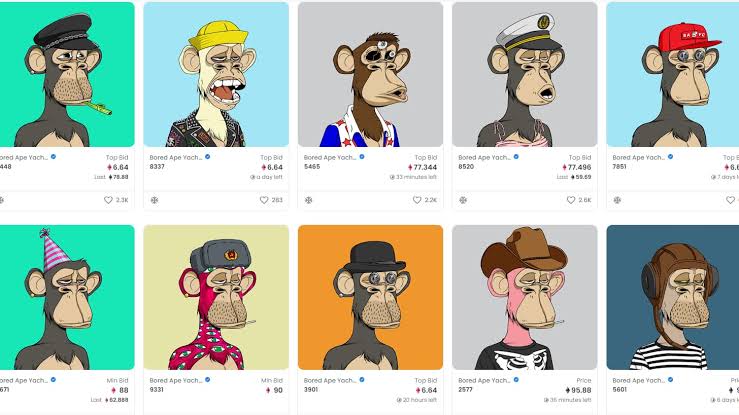The emergence of nonfungible token (NFT) markets has ushered in a new era and profoundly altered how we view and use digital assets. They give artists a fresh platform on which to present their works and build a meaningful relationship with their audience. In this revolution, OpenSea has assumed centre stage.
Alex Atallah and Devin Finzer created OpenSea, which was founded in 2017. Their objective was to create an accessible and open market for NFTs. Aiming to give artists and collectors a way to participate actively in the developing digital ownership economy, the founders of NFT recognised the revolutionary potential of these assets.
As the demand for nonfungible tokens (NFTs) grew, OpenSea skillfully widened its scope to include a greater variety of blockchain networks and protocols. The platform was able to accept the wide range of NFT projects that were developing thanks to this tactical move, which also ensured that it could serve a constantly expanding customer base. In addition to enhancing its standing as a leading NFT marketplace, OpenSea’s dedication to embracing interoperability and inclusion.
In this article, we’ll talk about how open sea operates, key features of open sea and open sea’s benefits and downsides
How does OpenSea operate?
Designed for the purchase, sale, and exchange of NFTs, OpenSea is a blockchain-based aggregator marketplace. Though decentralised, it performs many of the same tasks as well-known e-commerce sites like eBay and Etsy.
Parallel to these platforms, OpenSea supports transactions between people, but with a special twist: It only deals with NFTs of various kinds, from utility NFTs like membership tickets to art, music, collectibles, virtual lands, sports assets, and domain names.
The platform’s non-custodial approach is its defining characteristic. Smart contracts that self-execute make transactions possible, guaranteeing a trustworthy and secure trade. Despite the lack of middlemen, OpenSea nonetheless takes a 2.5% commission from all secondary sales to assist defray platform operating expenses.
In addition to supporting the ERC-721 and ERC-1155 Ethereum standards, OpenSea has also smoothly integrated the protocols for a number of additional blockchains, such as Solana and Polygon.
In order to enable quicker and more affordable transactions, OpenSea integrates the Polygon blockchain, a layer-2 scaling solution, in order to address the frequently prohibitive transaction fees on the Ethereum network. On OpenSea, switching between the Polygon and Ethereum networks is a simple operation that can be completed with a single click. For newbies in particular, this user-friendly feature ensures a seamless experience.
The platform OpenSea announced a massive redesign of its infrastructure in 2022, switching from the Wyvern protocol to its recently created Seaport protocol. The goal of this transformation was to improve the marketplace’s efficiency and streamline operations, with the potential to significantly lower platform transaction costs. The protocol also makes wallet signatures easier to read and understand, thus enhancing the user experience.
The Key features of OpenSea
The OpenSea NFT marketplace is known for a number of unique characteristics that contribute to its success and usefulness. These features include minting capabilities, transparent transactions and lower petrol costs made possible by layer-2 solutions, customised storefronts, instructional resources and more.
OpenSea’s salient attributes include:
1.Establishing ownership rights and legitimacy for one’s digital works is possible with the minting functionality.
2.Transparency is guaranteed by the self-executing smart contracts of OpenSea, which prevent the need for middlemen and guarantee safe, transparent transactions.
3Support for several blockchains: By integrating with a number of different blockchains in addition to Ethereum, OpenSea increases accessibility.
4. Numerous NFT categories: OpenSea offers a wide selection of NFT types that appeal to a variety of customers, including art, music, collectibles, virtual lands, domains, and utility NFTs.
5.Interface that is easy to use: OpenSea has a user-friendly interface that makes it simple to navigate, is appropriate for all user levels, and promotes NFT management.
6Storefronts that can be customised: Creators can create custom storefronts to highlight their NFT collections and strengthen branding.
7.Participation in the community: OpenSea promotes communication through comments, followings, and examination of popular collections.
8.OpenSea offers instructional resources to assist users in understanding petrol prices, navigating NFTs, and making educated decisions.
9.Continuous innovation: OpenSea adapts to the changing NFT market by adding new features, improving existing ones, and integrating new ones.
10 OpenSea encourages diversity by supporting multiple languages and providing a variety of content to a worldwide audience.
OpenSea’s benefits and drawbacks
Some features stand out when weighing the advantages and disadvantages of OpenSea. Positively, OpenSea provides a simple and user-friendly experience. It is accessible to everyone without any connected fees.
The site charges negligible costs for NFT sales, which increases its allure. Additionally, the existence of numerous blockchains offers workarounds for Ethereum’s high transaction fees.
The sole reliance of OpenSea on cryptocurrencies for payments, on the other hand, may restrict accessibility for people used to conventional payment methods. There’s a chance of running into subpar or fake NFT listings because the site is so open.
Additionally, OpenSea lacks thorough rules and a completely decentralised governance mechanism, which may affect its decision-making procedures and conformity with decentralised ideals.
In conclusion, OpenSea keeps moving forward with its evolution and innovation despite the constantly changing NFT landscape. The platform’s capacity to adopt new styles and asset classes, as well as its dedication to effectiveness and involvement in the community, augur well for its continued dominance.
In terms of activity volume, which has been a distinguishing aspect of its success, OpenSea confronts more intense competition as rivals mature. Despite obstacles, OpenSea is ready to reshape the world of digital ownership, setting the bar for how we engage with art, commerce, and ownership in the age of developing technology and digital assets.

